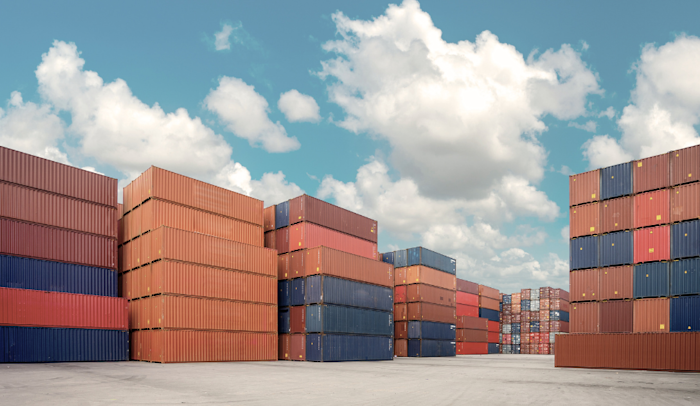
How to Streamline Imports to Mexico With a Pre-Customs Clearance Inspection (Previo en Origen)
With a population of over 120 million and a growing economy, Mexico presents significant commercial opportunities for companies worldwide.
PwC (PricewaterhouseCoopers) predicts Mexico will be the world’s seventh-largest economy by 2050, with its growth exceeding that of both the United States and China. Mexico’s import numbers back these projections—in pre-pandemic 2019, the country imported goods valued at US$467,342 million, primarily from the US, China, and the EU.
However, the Mexican import process is characterized by complexity, delays, and unique difficulties. In this article, we explore the challenges importers face and how a Pre-Customs Clearance Inspection (Previo en Origen) can streamline the process.
Previo en Origen (PEO) is often referred to as “container loading check” or “container loading supervision.” However, they are not identical services. PEO is a specialized version of a Container Loading Check service, with features that help speed up customs clearance and reduce delays for imports into Mexico. Container Loading Supervision is a component of PEO that focuses solely on monitoring the loading process of goods into containers to ensure proper handling and secure sealing.
Challenges of Importing into Mexico
Every shipment of foreign goods arriving at a Mexican port must undergo a ‘goods customs clearance’ – a review of physical products and accompanying paperwork – as stated in Article 43 of the Ley Aduanera (Customs Law).
The customs clearance process is mandatory, and if not conducted in accordance with regulations, it can lead to significant delays and expenses for importers due to three key reasons:
The process is lengthy. Various factors, such as lack of space in enclosures for moving products, waiting queues during peak hours when all platforms are in use, and prolonged downtime when goods are waiting for the next step, all contribute to the pre-clearance and customs clearance process taking days. Issues during loading, such as incorrect product quantities or improper packaging, can further complicate the process, making container loading supervision essential to avoid delays. Even if all documentation has been provided correctly, the complexity of the process may still cause delays that are entirely out of the importer’s control.
Importers are unaware of regulations. Many importers, as well as customs agents, may lack the necessary knowledge of regulations related to their products and the Mexican import process, causing delays due to incorrect paperwork.
Mexico has complex labeling requirements. As of October 1, 2020, all importers must comply with the Official Mexican Standards (NOMs) specific to their product type. Importers have three options for product labeling: at a private address with an accredited Inspection Unit, at an accredited General Warehouse, or at the point of origin – each with its own set of requirements. Failure to comply can lead to additional unnecessary delays.
For more information on the requirements for importers to Mexico, read our whitepaper.
Taking a Proactive Approach with Pre-Customs Clearance Inspections
Any customs clearance delays incur expenses, as the shipment must be stored under customs control. In extreme cases, the shipment may even be confiscated. Waiting until the goods arrive at a Mexican port to carry out visual and document review exposes importers to greater risk.
A Pre-Customs Clearance Inspection is a proactive step importers can take to pave the way for smoother customs clearance. It involves reviewing the physical and documentary details of a shipment in the country of origin, prior to shipment. Container loading supervision further ensures that products are packed securely and match the documentation provided.
If any issues are found during the Pre-Customs Clearance Inspection, they can be resolved before the shipment arrives in Mexico. Typically, PEO allows a shipment to be released from Mexican customs within 24-48 hours.
How QIMA Can Help
QIMA provides comprehensive Pre-Customs Clearance Inspections (Previo en Origen) to help you streamline your imports to Mexico. Our Pre-Customs Clearance Inspection consists of the following steps:
Service request and coordination with the supplier/factory
Inspection of product specifications at the origin
Count of 100% of the packages loaded into the container vs. packing list
Container loading and closure supervision
Preparation and release of cargo reports with a customs process analysis
Audit of the report with the client and/or customs agent
Arrival of the container and submission of the request to Mexican Customs (SAT)
Release of the container within 48 hours
Why QIMA for Your Previo en Origen Inspection?
With 15 years of experience providing Previo en Origen services, we have built a reputation for excellence in import inspections. We collaborate with leading importers across all product sectors, including major retailers in Mexico and companies in the nearshoring sector. Our expertise in local regulations and customs processes in Mexico guarantees seamless customs clearance and compliance. Our team is committed to efficiency and fast response times, with inspectors onsite within 48 hours of your request and detailed reports available on the same day. Leveraging a comprehensive online platform, we offer real-time insights and streamlined processes. Our unparalleled expertise and proactive measures help mitigate risks and ensure the highest standards for your imports.
For more information, contact our team.
Related Articles


